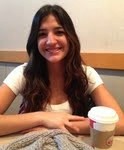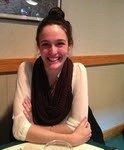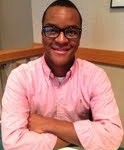This letter concerns the quality of food provided by Chartwells dining services and not the racial insensitivity or lack thereof surrounding the Black History Dinner. I’d like to first focus specifically on the effort that Chartwells makes to remain accessible and flexible to the needs and desires of students before turning to the actual quality of the food offered on campus.
Chartwells Regional Manager Gene Castelli embodies accessibility. Talk to any member of the Tree House, to anyone with complicated dietary restrictions, to anyone who is interested in making a real difference in Ohio Wesleyan dining, and I guarantee they have spent some quality time working with Mr. Castelli. This past fall I referred a raw vegan friend (one of the most restrictive diets in existence) to Mr. Castelli. The regional manager and his staff worked with this student to make sure he was able to continue to follow this lifestyle while here at Ohio Wesleyan and to do so in the healthiest way possible.
Mr. Castelli and his staff are constantly reviewing student feedback in an effort to improve food quality. Chartwells is a business, they still need to remain profitable and prepare foods that appeal to the average student, however, that doesn’t prevent the organization from being receptive to student ideas. Mr. Castelli, from my experience, and the experience of many students on campus, is as receptive and dynamic as a regional manager can get.
Maybe you are only a casual eater. Maybe meeting with Mr. Castelli is a little too much for you. Maybe attending one of many lunches designed give students a chance to talk with the Chartwells management is outside of your comfort zone.
Even you, casual eater, can help shape the Chartwells dining experience. The organization is always pushing at least one survey to gauge student interest and satisfaction. There are drop boxes for customer satisfaction forms in Smith Dining Hall, Hamilton-Williams Campus Center Food Court and Bishop Café. If you don’t like something, you, personally, can do something about it.
For those who struggle to find something they like on campus, you aren’t looking hard enough. I understand that there are problems. However, I would urge students to explore and try new options.
The Healthy Bishop Station (to the left of the main line in the Food Court) has tons of healthy options and some really delicious and interesting stuff. In Smith there are interesting, always changing, options next to the deserts and down the line from the salad bar. Worst case scenario, you go to the “My Pantry” station and a member of the Chartwells staff makes you a delicious stir-fry and then you finish off your meal with a bowl of Frosted Mini-Wheats.
By spending some time trying new things and experimenting I guarantee students will find something they like. This is especially true for vegetarian and vegan students on campus. As a vegetarian myself I do feel like sometimes I have to look a little bit harder, but I genuinely believe there are always options. That said, often times vegetarians and vegans have it pretty easy. In the Food Court, out of 20 consecutive days, the Healthy Bishop Station served 29 vegetarian and 31 vegan dishes for lunch alone.
The Culinary Table (to the right of the main line) served 44 vegan and 36 vegetarian additional options in those same 20 days. I will admit that being gluten free here on campus is more complicated. However, I believe with some creativity and communication with the Chartwells staff, even those with the most restrictive dietary needs can find something great to eat.
Complaints are easy. There are clearly problems, and Ohio Wesleyan students are clearly cognizant of them. That said, I’d challenge the OWU community to do more than complain.
Addressing the problem is an important first step, but it’s figuring out logistically sound and sustainable solutions that can bring real change to campus. We have been given an incredible opportunity to be involved with our campus dining service. I urge all of you to contribute to the ongoing conversation between Chartwells and the Ohio Wesleyan community.
Jake Bonnell
Healthy Bishop Initiative Student Chair

















